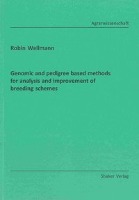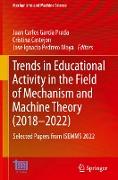Genomic and pedigree based methods for analysis and improvement of breeding schemes
BücherAngebote / Angebote:
Artificial selection in livestock populations during the last decades yielded great improvements in economically important traits, and also remarkable changes in conformation traits. These improvements were achieved by the intense use of a small number of genetically superior and often closely related individuals. The consequences were a decrease of the effective population size and an increase of inbreeding coefficients.
Whereas in most livestock populations a crucial decline of genetic diversity occurred not before introduction of artificial insemination, many dog breeds and other companion animals are faced with a small effective population size for a considerably longer time span because their fertility is high and the total population size is small. This makes them to be interesting subjects for studying consequences of small historic effective population sizes and for application of new methods that aim to recover inbreeding depression. For the future management of a population it is useful to have knowledge about the population structure and historical bottlenecks of a breed, a characterization of the prevalent breeding scheme, and their historic effects on the genetic diversity. These are studied in the first two chapters at the example of two dog breeds by pedigree based analyses. It includes a method for monitoring the time course of the effective population size and a permutation test for the presence of a popular kennel effect. Multidimensional scaling was a suitable method for the graphical representation of population structure.
Small effective population sizes and increasing inbreeding coefficients increase the probability that recessive deleterious alleles are homozygous, which is considered to be the predominant cause of inbreeding depression. One current approach to deal with this problem is the prediction of the effects of thousands of genetic markers simultaneously from a limited number of genotyped and phenotyped individuals. Estimated marker effects can be used for the calculation of genomic breeding values which enables the selection of breeding individuals at an early stage in their life. This selection technique is often termed genomic selection. Until now, almost only additive marker effects are considered in genomic selection. Although the genetic variance of most complex traits is mainly additive, traits that suffer from inbreeding depression often also have considerable dominance variance, which enables mate selection programs with the objective of recovering inbreeding depression and utilizing possible overdominance. Given that a sufficiently large phenotyped and high density genotyped training data set can be established, a marker based genome wide evaluation is the method of choice. It is shown that a simple genomic BLUP model with dominance effects provides suboptimal results, and more sophisticated methods are proposed. These methods account for prior knowledge about the genetic architecture of quantitative traits. For many traits estimates of variance components and inbreeding depression are available. It is shown how genetic architectures can be identified which are in accordance with these available estimates. Thereafter it is shown that the accuracy of estimated dominance deviations and genotypic values can be increased if prior knowledge about the genetic architecture of the quantitative trait is incorporated into Bayesian models for genome wide evaluation.
Folgt in ca. 2-3 Arbeitstagen




